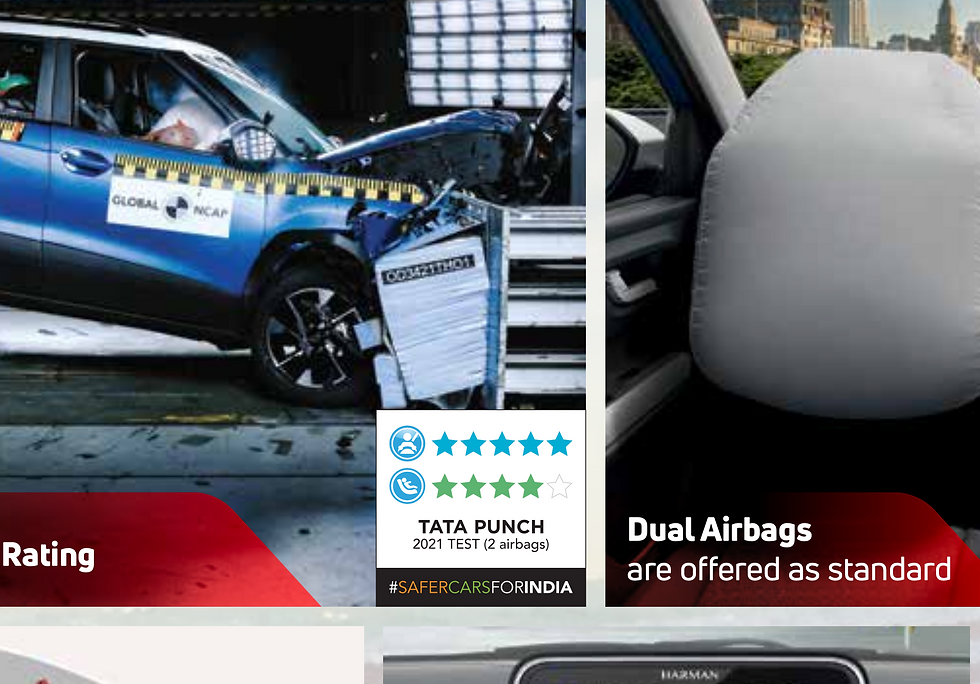Before NCAP stickers, misusing them needs to end
- The Yawning Chihuahua
- Aug 31, 2024
- 2 min read
Yesterday, Bharat NCAP issued visual identity guidelines for carmakers to use their ratings in marketing material. I applaud that, because at least on paper, it restricts automakers twisting the ratings to their marketing needs.
I'm more worried that a bigger issue isn't being addressed: automakers are still getting away with misusing other NCAP ratings to mislead customers. GNCAP, for what it's worth, seem to have quietly cracked down quite hard on some of these tactics, with many older unauthorised rating displays being silently replaced by approved plates with correctly coloured and datestamped stars, eg. the Tata Punch.

GNCAP themselves have gone on record (12:52) as saying that carmakers aren't allowed to communicate ratings for more than 4 years after publication (source: Autocar magazine via YouTube).
But cars like the Tata Tiago and Tigor, whose 2020 4-star ratings are 4 years and 7 months old now, still proudly display them on the cover pages of their brochures.

Meanwhile, rivals like the Honda Amaze, rated 4 stars in 2019, have already been retested and rated 2 stars in 2024 because they don't have ESC or 6 airbags, which the Tigor doesn't either. The Tigor not having a new rating yet is sad, but using the old rating for marketing borders on unfair competition.
And then there's the problem of carmakers advertising irrelevant foreign ratings. Take the Škoda Kodiaq, for example, which also brags its 2017 5-star Euro NCAP rating on the front page of its Indian brochure.

But in India, the Kodiaq is assembled from CKD kits (a 'parts-and-components car' in VW speak) and doesn't have many of the crash avoidance technologies that contributed to the Kodiaq's 5-star rating, as well as crash protection equipment like pretensioners for the second-row seatbelts. If my maths is right, just removing the 2.7 points (22%) the Kodiaq scored for AEB would have set it squarely in middle of the 3-star band in 2017.
That's not to mention the Kodiaq's rating finished its Euro NCAP 6-year validity this January, and Škoda aren't even allowed to advertise the expired rating in Europe anymore, with Euro NCAP citing the reason "the rating scheme is expected to change so significantly during this period that referring to an older result would mislead consumers".

It's a similar case with the CBU BYD ATTO 3, which got a stripped-down base variant without blind spot detection and ADAS earlier this year, but still shows off its Euro NCAP rating. If this new base version had been offered in Europe, the ATTO 3 would have been given 0 stars, which it's somehow okay to troll only Mahindra for.

If BNCAP wants to really help Indian consumers fairly compare local cars against their criteria, it is very important that cars that display irrelevant or expired ratings are called out for it. A good way to start would be making a window sticker mandatory for ALL cars, and labelling locally untested or expired cars as 'untested'.







Comments